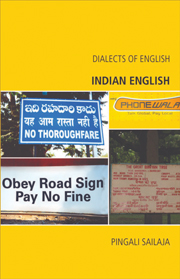Book contents
- Frontmatter
- Contents
- Preface
- Acknowledgements
- Abbreviations, Symbols and other Notational Conventions Used
- 1 Introduction
- 2 Phonetics and Phonology
- 3 Morphosyntax
- 4 Lexis and Discourse
- 5 History and Changes in Progress
- 6 Survey of Previous Work and Annotated Bibliography
- 7 Sample Texts
- Bibliography of Cited Works
- Index
6 - Survey of Previous Work and Annotated Bibliography
Published online by Cambridge University Press: 05 August 2013
- Frontmatter
- Contents
- Preface
- Acknowledgements
- Abbreviations, Symbols and other Notational Conventions Used
- 1 Introduction
- 2 Phonetics and Phonology
- 3 Morphosyntax
- 4 Lexis and Discourse
- 5 History and Changes in Progress
- 6 Survey of Previous Work and Annotated Bibliography
- 7 Sample Texts
- Bibliography of Cited Works
- Index
Summary
Most works on IE do not deal with just one aspect at a time – they touch upon as many features as possible. A greater amount of work has been done on phonology, especially the regional varieties of Indian English, than on other aspects. Lexis is commented on in many works. Syntax is the least studied of all the linguistic features. It is only in the more recent works that we find a deeper analysis of the syntactic structures of IE. The trend among these later works seems to be to try to identify preferences based on the corpora available. The earlier works of the 1960s and 1970s have been more concerned with the idea of establishing whether such a phenomenon as IE exists at all. The most vociferous champion of IE as a legitimate variety of English has been B. B. Kachru.
This chapter lists some of the more important works on English in India and Indian English. It does not purport to be a complete list. There are several articles in different places which deal with similar topics as those covered below. The chapter is divided into parts that somewhat match the chapterisation of the book. The works presented in this chapter are divided according to subject matter. However, perfect categorisation is not possible because, as stated above, many works deal with several aspects at the same time.
- Type
- Chapter
- Information
- Indian English , pp. 120 - 132Publisher: Edinburgh University PressPrint publication year: 2009

